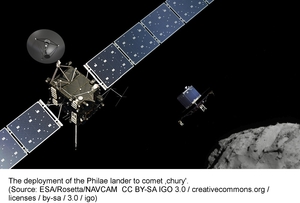

|
Edward Lowton
Editor |


|
| Home> | Plant, Process & Control | >Sensors and instrumentation | >4 billion miles: One tank of fuel |
4 billion miles: One tank of fuel
27 April 2015
When the European Space Agency’s (ESA) Rosetta space probe arrived at Comet 67P/Churyumov-Gerasimenko it had been travelling for 10 years and completed 4 billion miles on just one tank of fuel. Kistler pressure sensors monitored the fuel consumption continuously to ensure that Rosetta arrived at its destination with enough fuel to make the final corrections necessary to put the probe into orbit.

If the fuel had run out before the probe reached the comet, the navigational thrusters would not have been able to make the numerous course corrections needed to rendezvous with the comet and then establish a stable orbit from which to launch the Philae landing module. Throughout the long journey, Kistler pressure sensors monitored the fuel consumption continuously to ensure that Rosetta arrived at its destination with enough fuel to make the final corrections necessary to put the probe into orbit.
The Rosetta mission was one of the most ambitious projects executed by the ESA and two Kistler piezoresistive sensors played a small but valuable part in the success of the project. The key selection criteria for these sensors included their proven longevity and total reliability despite high levels of vibration at lift-off and years of zero gravity conditions.
Rosetta's cargo includes what is known as the Rosetta Disk – a nickel alloy disk with information etched onto it in image form. The disk contains about 13,000 pages of text in 1200 different languages, and it should still be readable after 10,000 years: durable though they are, even Kistler's sensors are unlikely to be functioning after such a lengthy period.
- Test stand system
- Miniature triaxial accelerometer
- Sensors for testing impact protection
- Switchable ranges
- Free production monitoring seminar
- Zero defect moulding? Kistler white paper explains more
- Intuitive information system
- Cost effective and simple joining processes
- Kistler acquires software group
- Pressure sensor validates


















